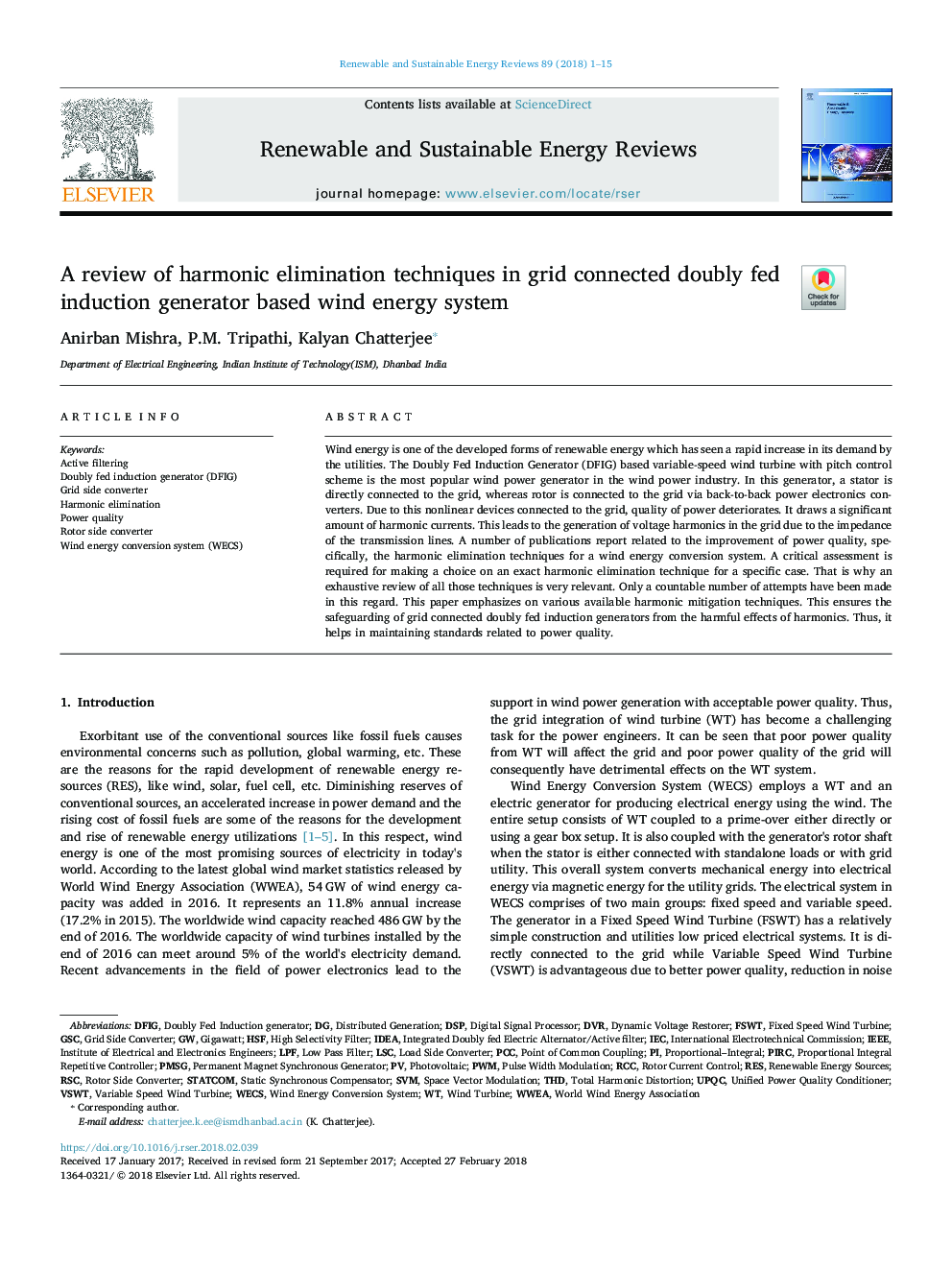| Article ID | Journal | Published Year | Pages | File Type |
|---|---|---|---|---|
| 8111323 | Renewable and Sustainable Energy Reviews | 2018 | 15 Pages |
Abstract
Wind energy is one of the developed forms of renewable energy which has seen a rapid increase in its demand by the utilities. The Doubly Fed Induction Generator (DFIG) based variable-speed wind turbine with pitch control scheme is the most popular wind power generator in the wind power industry. In this generator, a stator is directly connected to the grid, whereas rotor is connected to the grid via back-to-back power electronics converters. Due to this nonlinear devices connected to the grid, quality of power deteriorates. It draws a significant amount of harmonic currents. This leads to the generation of voltage harmonics in the grid due to the impedance of the transmission lines. A number of publications report related to the improvement of power quality, specifically, the harmonic elimination techniques for a wind energy conversion system. A critical assessment is required for making a choice on an exact harmonic elimination technique for a specific case. That is why an exhaustive review of all those techniques is very relevant. Only a countable number of attempts have been made in this regard. This paper emphasizes on various available harmonic mitigation techniques. This ensures the safeguarding of grid connected doubly fed induction generators from the harmful effects of harmonics. Thus, it helps in maintaining standards related to power quality.
Keywords
RCCDFIGSTATCOMrotor side converterTHDWECSIEEEPMSGRSCGSChsfRESPWMLSCUPQCDVRPCCUnified power quality conditionerDSPLPFTotal harmonic distortionIDEADynamic voltage restorerWind turbinefixed speed wind turbineVariable speed wind turbineDistributed generationStatic synchronous compensatorHarmonic eliminationWind energy conversion systemWind energy conversion system (WECS)PhotovoltaicActive filteringLow pass filterSVMSpace vector modulationPulse width modulationRenewable energy sourcesInstitute of Electrical and Electronics EngineersPoint of common couplingDigital signal processordoubly fed induction generatorDoubly fed induction generator (DFIG)Permanent magnet synchronous generatorInternational Electrotechnical CommissionIECPower qualityGigawatt
Related Topics
Physical Sciences and Engineering
Energy
Renewable Energy, Sustainability and the Environment
Authors
Anirban Mishra, P.M. Tripathi, Kalyan Chatterjee,
